Being able to tune a pritchel is a good skill to have for making shoes. Without a properly tuned pritchel, the nails will not fit the nail holes. That being said, it’s a skill you want to master at your home shop before taking it on the road and apply it in a high-stakes situation. In this article, I’m sharing my process for tuning a pritchel. My ultimate goal in this exercise is to match the pritchel to a punch that was tuned by my American Farriers Team (AFT) teammate Arkansas farrier Adam Fahr. You can read about how he tunes a punch in the article “A Purpose for Every Punch,” which appeared in the March issue of American Farriers Journal.
When you tune a pritchel, it must perfectly match the end of your cor-res-ponding punch, that way the pritchel can shear out the exact slug of your punch to fit the shank of the nail. It must be an exact fit. After being used during an AFT practice, the pritchel I reference in the Step-by-Step below has become distorted. My approach is to forge it on all four sides equally because you want to sharpen it to make it smaller, then bump it straight back to get it flat. If it’s not sharp and it’s not flat, it makes a round hole. Nail shanks are square and have sharp corners so the pritchel needs to work like a shear.
Step-By-Step
1.
The first step is to bring it to a red heat in the fire. The heat is important because if you get it too hot, you will wreck the hardness of your steel. If it’s too cold, it will fracture and get cold shunts. You also don’t want to burn all of the carbon out of it. You want it just under an orange heat.
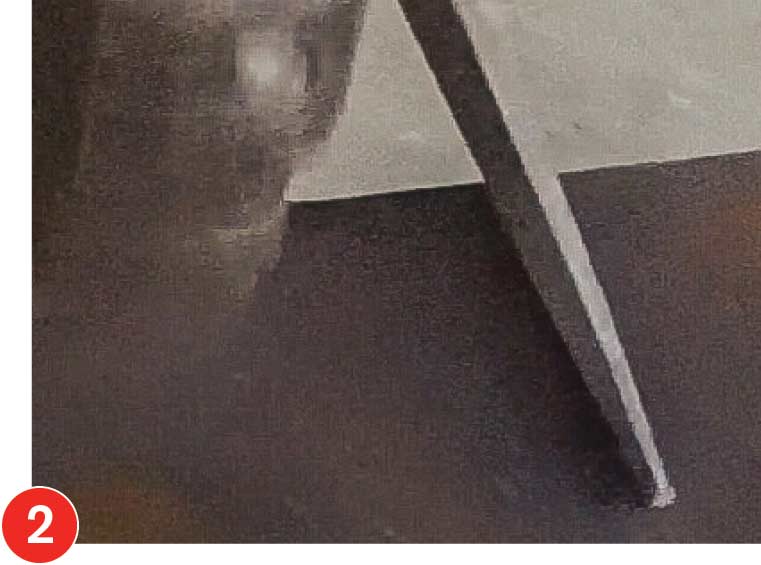
2.
Next, bring the pritchel to the anvil to forge it. Because you are working with such a small surface area you have to be pretty exact. Lay the pritchel flat on the anvil and hit it equally as flat with the hammer to almost bring it to a sharp point. If you forge it skinny and long, no matter how much you back it up, it is not going to match — and vice versa. If you get it perfectly square you’re not going to match this E-head punch either. When the pritchel starts to lose heat, you have to quit forging or you will end up with cold shunts. The key is taking a lot of quick heats.
;
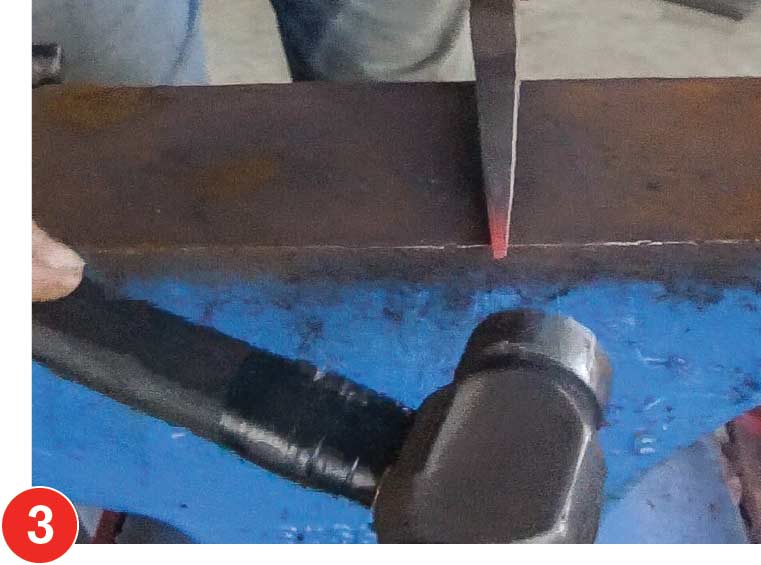
3.
Heat the pritchel a second time and repeat the process. Now I want to back it up because I want it to be square and right now it’s looking a little too rectangle-shaped. You can sharpen it as much as you want as long as it is in proportion to the punch and back it up on a grinder. When you bump them back, you want to make sure you bump them back square. You want almost a little bit of a bell shape. Take a moment to compare the pritchel and punch, and in this case, the pritchel has become smaller than the punch. Keep bumping it back until they are the same size. It’s close, but take one more heat to square it up and bump it back.
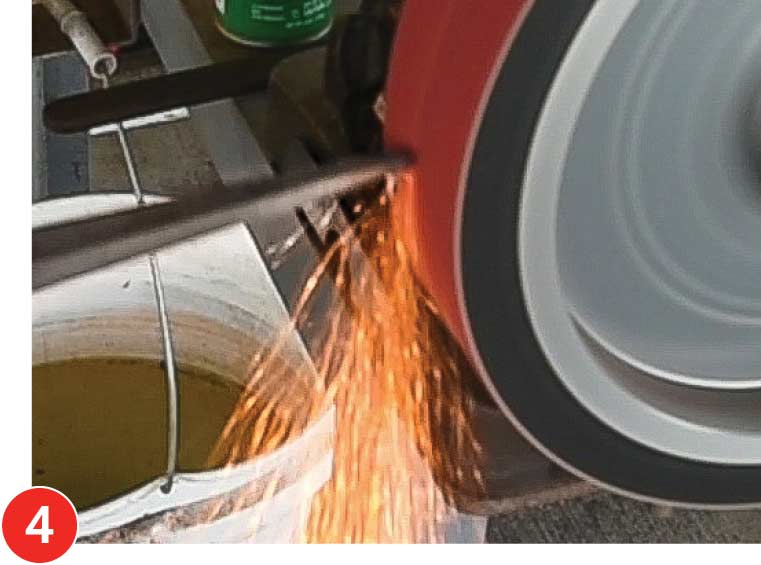
4.
Finish it off at the grinder to get it exact. At this point, the pritchel just needs a little touch. Not much pressure is needed.
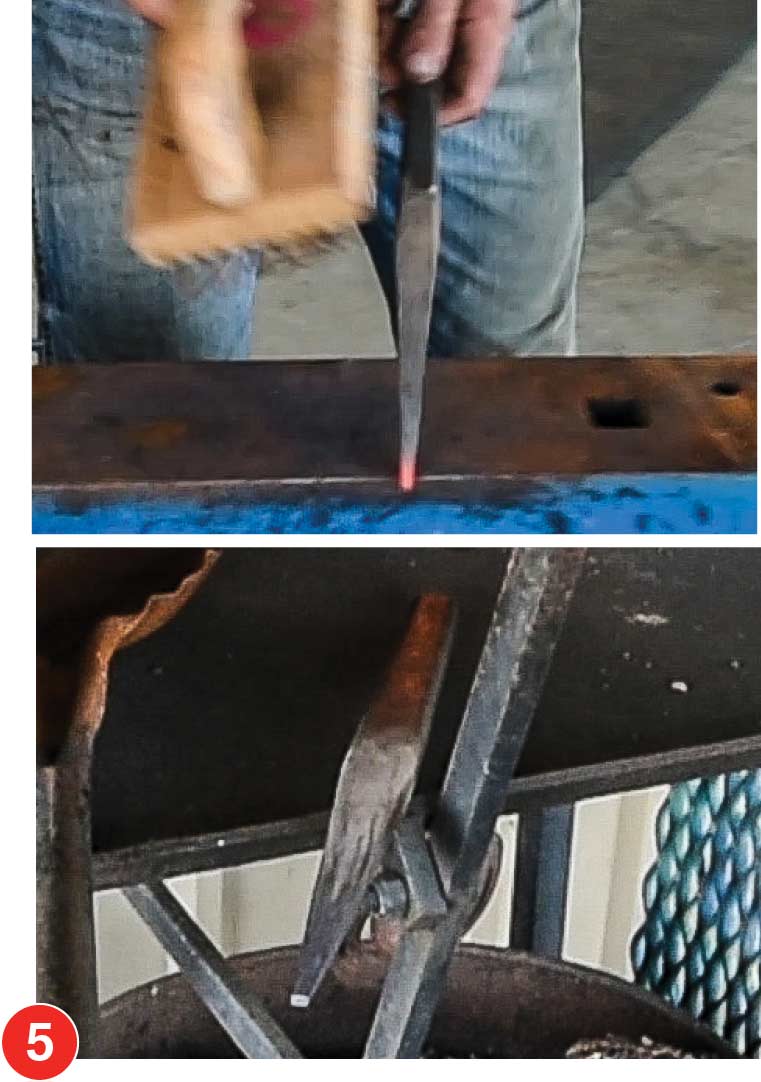
5.
Now bring it back to the same heat and brush it to get all the slag off of the pritchel. Let it air cool. If you quench it or cool it too fast, it will make it too hard and brittle and it will just snap — it will be no good. If you let it cool down too slow it will be too soft. I usually set it on the corner of my tool tray. Don’t set it on the concrete because that’s usually too cold and it will suck the heat out of it; same thing with your anvil. Just set it somewhere that air can get to it. When it is cold it is ready to roll.
PRO TIP
If you drop your nail in and the pritchel hole is loose, your pritchel is too big and needs to be tuned. If it’s too small and your nail won’t drop, your pritchel needs to be bumped back until it makes an exit hole that fits your nail shank tight. Master tuning your pritchel at home before trying it at a contest when the stakes are high.

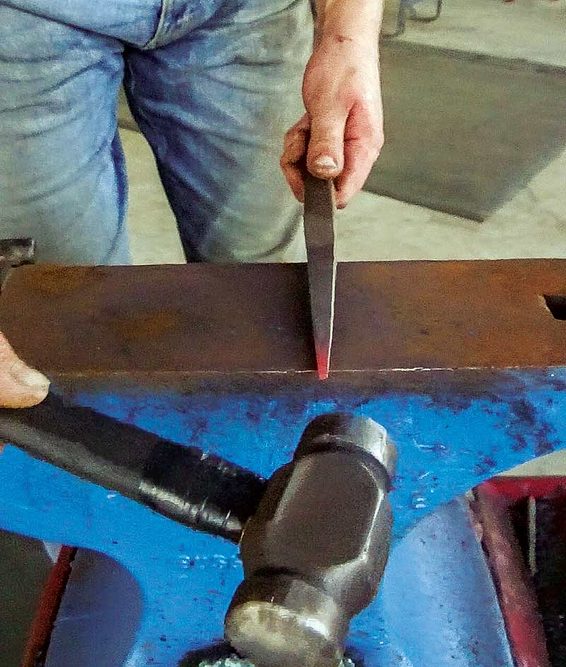
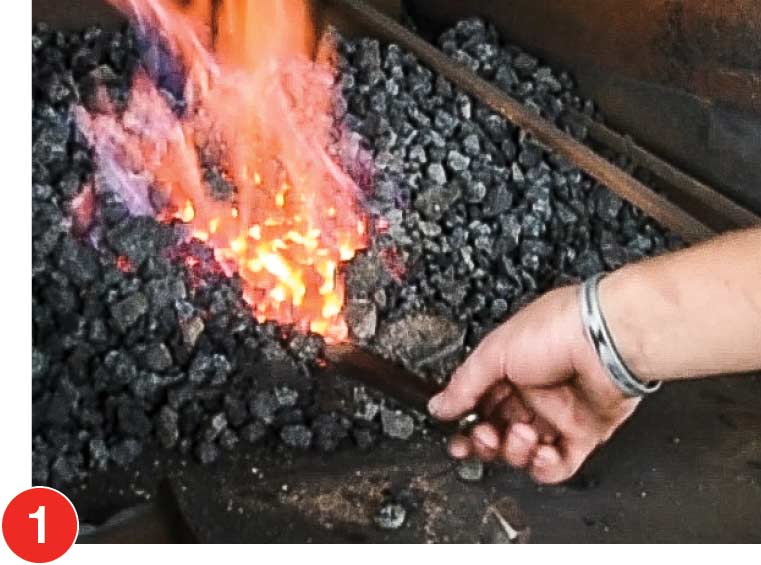







Post a comment
Report Abusive Comment